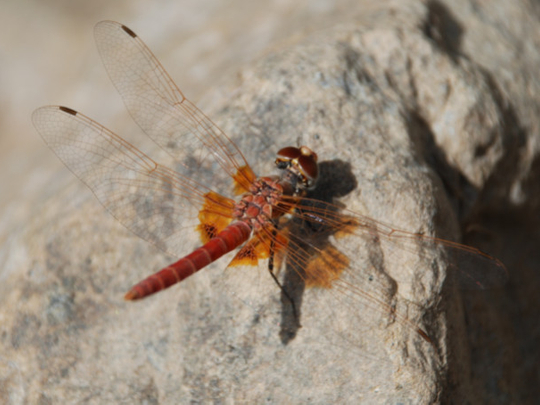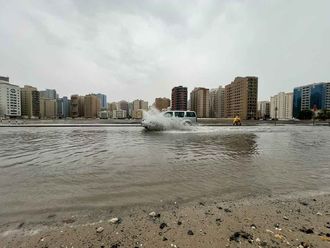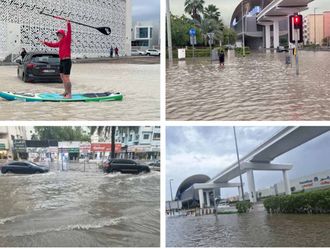
The Fujairah government’s closure of Wadi Wurayah National Park to the public in December was a move in line with the ethos of the International Water Summit (IWS).
A global platform encouraging discussions between world leaders, field experts, academics and business innovators on water sustainability in arid regions, the IWS meets again in Abu Dhabi from today until Wednesday in tandem with the World Future Energy Summit at the Abu Dhabi National Exhibition Centre.
A site of importance
Wadi Wurayah, a 12,700-hectare area in Fujairah between Masafi, Khor Fakkan and Bidiyah, officially became the UAE’s first protected mountain area in March 2009 after His Highness Shaikh Hamad Bin Mohammad Al Sharqi, Ruler of Fujairah and Member of the Supreme Council, declared it so, as a direct result of the culmination of a project > led by the Emirates Wildlife Society-World Wide Fund for Nature (EWS-WWF) in partnership with the Fujairah Municipality and sponsored by HSBC Bank Middle East.
It was declared a Wetland of International Importance in 2010 under the Ramsar Convention due to the water quality at its nine freshwater sources that provide vital support to wildlife living within the area. The Ramsar Convention is an international treaty for the conservation and use of wetlands, recognising their economic, cultural, scientific and recreational value, which came into force for the UAE in December 2007.
The wadi was the second in the UAE to be designated a Ramsar site, following Ras Al Khor in Dubai in 2008. The country now has five designated sites.
The path to destruction
But human interference has jeopardised the balance of the Wadi Wurayah’s delicate ecosystem. People littering, scribbling graffiti on the rocks, loosening pebbles, poaching, destroying the natural vegetation, bathing in the fresh waterfall (using soap or swimming in it covered in sun cream) and even illegally introducing an invasive species of tilapia into the water, according to scientists working at the park, have all presented big problems for the area.
Apart from the nine freshwater sources that need to be protected from such activity, the wadi is also home to a species of orchid unique to the UAE (Epipactis veratrifolia), plus wildlife including the mountain gazelle, caracal, Gordon’s wildcat, the blue-tailed lizard, butterflies, garra fish and even migratory birds including the Bonelli’s eagle that all need to be preserved.
It is also one of the last three remaining strongholds in the world of the Arabian tahr (Arabitragus jayakari).
In addition, Ida Tillisch, Director General of the EWS-WWF, says, “More than 72 species considered new to science have been identified inside Wadi Wurayah.”
Most recently, in June 2013 a species of dragonfly identified as Urothemis thomasi was spotted by Jacky Judas, Research Manager, EWS-WWF, who says, “This species has a very restricted range, usually confined to Dhofar [in the south of Oman] and northern Oman. It has never been recorded in the UAE.”
After sending a photograph of the specimen for identification to Europe, Judas was told that this was in fact the Urothemis thomasi, a species that had not been recorded anywhere in the world since 1957. “It was thought to be extinct,” he adds. The national park houses 22 of the 30 known dragonfly and damselfly species of the UAE.
Urothemis thomasi is listed as endangered on the International Union for Conservation of Nature’s Red List, a worldwide inventory of the global conservation status of biological species.
A mark of respect
The indefinite closure of Wadi Wurayah, therefore, was necessary, says Shaikh Mohammad Bin Hamad Bin Mohammad Al Sharqi, Crown Prince of Fujairah, who led the closing ceremony. “As we move into the future, we must protect our natural heritage for the good of our people. The park is a living and precious symbol of our respect for our past and our hopes for the future.
“As such, I have directed Fujairah Municipality and Emirates Wildlife Society in association with WWF to establish and manage Wadi Wurayah National Park as a regional model for nature conservation,” he says.
The managing teams have already conducted on-site research and have applied conservation efforts to the fauna and flora. They have also established a water research and learning centre in partnership with HSBC and Earthwatch Institute.
Research into freshwater issues and education is highly important for this arid region and its people says Ammar Shams, HSBC Regional Head of Corporate Sustainability. He adds that water scarcity is a huge problem around the world and almost 60 per cent of those countries with limited access to fresh water are situated in the Middle East.
It is not clear when the park will reopen, but the EWS-WWF is tasked with rehabilitating the area previously tarnished by people. Other tasks for the EWS-WWF include training a team of dedicated rangers to patrol the park on an ongoing basis and looking into the most critical of the research studies currently under way in the park.
“Not only do the people of the UAE need this place but [also] the world. Too often, we think of conservation when it’s too late,” says Tillisch. “By protecting Wadi Wurayah we are putting this landscape and the life in it into a global trust for future generations.”












